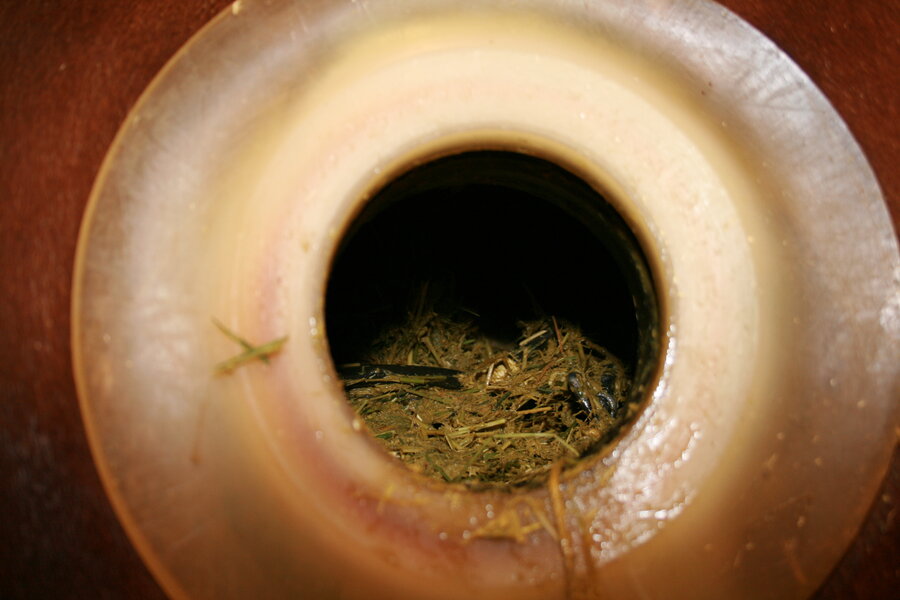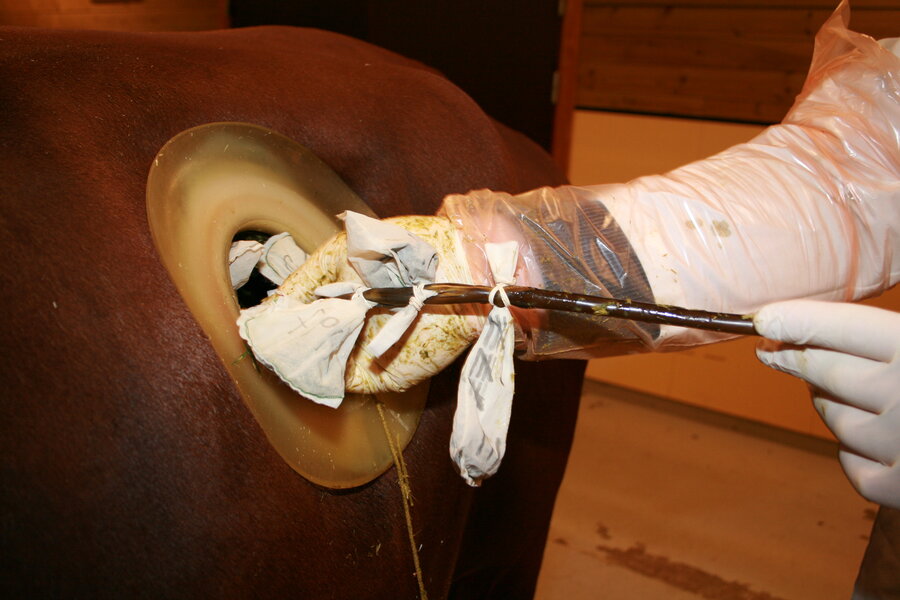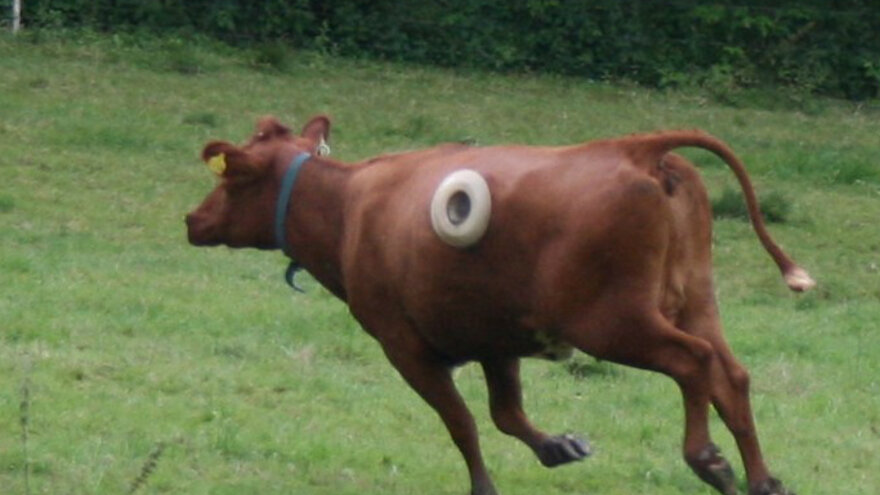At Ås Farm at NMBU, we have some cows that are a little different from most cows. These are the fistula cows, 12-14 of the kind. These cows have a hole in their rumen that is big enough to stick your hand into. The hole gives researchers and students a unique opportunity to study what goes on inside the cow.
We have had fistula cows since the early 1980s, and over the years they have helped to optimise feeding, reduce nitrogen emissions, produce milk with a more favourable fat composition than regular milk and contribute to research into reducing methane gas emissions from livestock farming.
From grass to human food
To convert grass into milk, cows rely on microorganisms (microbes) that live in their rumen. Without the help of these microbes, the grass would be indigestible, just as it is for us humans. The most important microbes are bacteria and protozoa. Bacteria are very small, numbering around 1,000 billion per litre of rumen content. Protozoa are larger than bacteria and number around 100 million per litre of vomit content.
The rumen "the black hole"
Our knowledge of what happens inside the rumen was previously very limited. Creating a fistula into the rumen has opened up new possibilities. Through the hole, samples of feed can be taken out or inserted. By regulating what the cow eats, using the possibilities offered by the fistula and collecting and analysing what comes out the other end in the form of manure and urine, researchers and students have a unique opportunity to study the metabolism of the feed.

The vomfistula is made of soft rubber and has an openable lid.

Does the fistula hurt?
If the cow had been given a choice, it would probably have chosen not to have a fistula. During the operation to insert the fistula, the cow is awake and standing on its own two feet. It is given an injection and local anaesthetic and does not feel anything.
The fistula is given painkillers. However, once the wound has healed after the operation, the fistula is not a nuisance.

In the summer, fistula cows spend at least eight weeks on "holiday" out on pasture with other normal cows in the NMBU area. The fistula cow eats, shits and calves in the same way as other cows and milks normal amounts of milk. The fistula is washed and groomed every day, even when out on pasture.
Is this necessary?
The important question is whether the research conducted with fistula cows justifies their use. There will of course be different opinions on this
The fistula cows have contributed to, among other things:
Our students
learn about ruminant digestion and metabolism
Knowledge about greenhouse gases
Using the fistula cows, we are able to measure emissions of the greenhouse gas methane and thereby try to find a feed that is as environmentally friendly as possible.
Reduced nitrogen emissions
Fistula cows deserve much of the credit for a system of protein assessment for ruminants that was introduced a number of years ago. This has made the cow significantly more environmentally friendly by reducing its nitrogen emissions.
